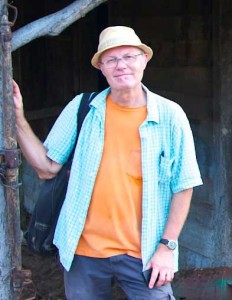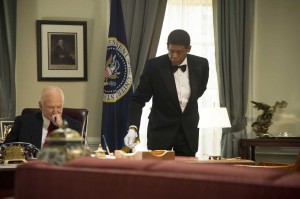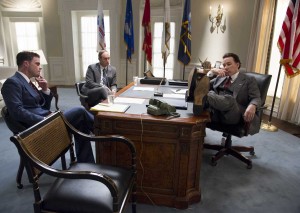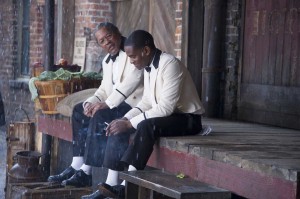
When production designer Tim Galvin first looked at locations for Lee Daniels’ The Butler in New Orleans, he and executive producer Adam Merims weren’t sure what they would find. But wherever they found it, they were determined to make it work. “Our biggest challenge was figuring out how to do the White House without having to build it,” Galvin said in an interview by phone, “because we couldn’t afford to build it, plain and simple. This was very much an independent film, and financing took time. When we all started in on this project, we vowed whatever it takes to make this film, we’ve got to make it happen.”
Based loosely on the life of Eugene Allen, the film dramatically intersects the quiet yet magnificent story of White House butler Cecil Gaines with the civil rights movement, the Vietnam War and eight different presidential administrations. The sheer scope of history portrayed in the film meant each location be thoughtfully chosen and sets just as carefully considered. “I had to look for places where I knew we could stage the scene but also sell the time period in the fleeting moments those locations are on screen,” Galvin said. Daniels’ use of archival footage, he added, helped bridge those leaping jumps in time the production schedule and budget couldn’t accommodate.

The film begins and ends inside the White House’s iconic hallway to the East Room, familiar to anyone who’s ever watched a presidential press conference on television. Without a building that matched the real White House’s interior scale, Galvin said, the film’s presidential arc, from the Eisenhower administration to the present, would ring false. They found their hallowed walls inside a New Orleans federal building of the same era, the U.S. Customs House. “We just had to enclose it, and dress it, and extend it and mask it, but we managed to create the White House entry hall,” Galvin explained.
They had similar success recreating the cramped yet elegant State Dining Room inside New Orleans’ old City Hall. “There is a real sense of honesty about Lee’s film, and it was important to find places that were really good matches, not just some Antebellum plantation house we were trying to pass off as the real thing. The hallway we built in the Customs House has the same basic footprint as the one in the White House heading into the East Room. That’s why you get that sense of verisimilitude. But it wasn’t always easy to shoot in these places.”
 Galvin credits his fabulous crew and set decorator Diane Lederman with so ably pulling off the continual “redo, redo, redo” inside the evolving White House “with truckloads of stuff from New York and L.A.” as the film progressed chronologically through principal photography.
Galvin credits his fabulous crew and set decorator Diane Lederman with so ably pulling off the continual “redo, redo, redo” inside the evolving White House “with truckloads of stuff from New York and L.A.” as the film progressed chronologically through principal photography.
Daniels worked closely with Galvin to create what became for the director a very personal rendering of American family life spanning the better part of the last century. “Lee has a lot of memories that have meaning to him, and he likes to feel that in those kinds of spaces,” said Galvin. “So much of the sense of the Gaines’ house was channeled through Lee’s own experience, from details like bowls of walnuts in the shell, to the colorful, noisy bird that appears in the party scene. It was so clever of him to bring a sense of imbalance to the scene to help the actors feel that much more authentic in that space.”
 Although the film’s inspiration, Eugene Allen, passed away before production began, Galvin said great care was taken to remain true to the spirit of the spaces Allen originally inhabited, from the hotel where he learned to be a waiter (actually four different locations blended into one on screen) to the bedroom in his family home. Early scenes filmed just outside New Orleans at a former sharecropper farm were also particularly moving for those on set. “It chills your blood to be shooting in someplace like that, which had also once been home to slaves.”
Although the film’s inspiration, Eugene Allen, passed away before production began, Galvin said great care was taken to remain true to the spirit of the spaces Allen originally inhabited, from the hotel where he learned to be a waiter (actually four different locations blended into one on screen) to the bedroom in his family home. Early scenes filmed just outside New Orleans at a former sharecropper farm were also particularly moving for those on set. “It chills your blood to be shooting in someplace like that, which had also once been home to slaves.”
Galvin said he and everyone connected with the film are still somewhat surprised by the film’s commercial success. “Lee made an entertaining movie, but its social importance really surpasses entertainment. The chance to be a part of something like that is so rare. The fact that it’s become so popular is also a really great and rare thing, too.”





